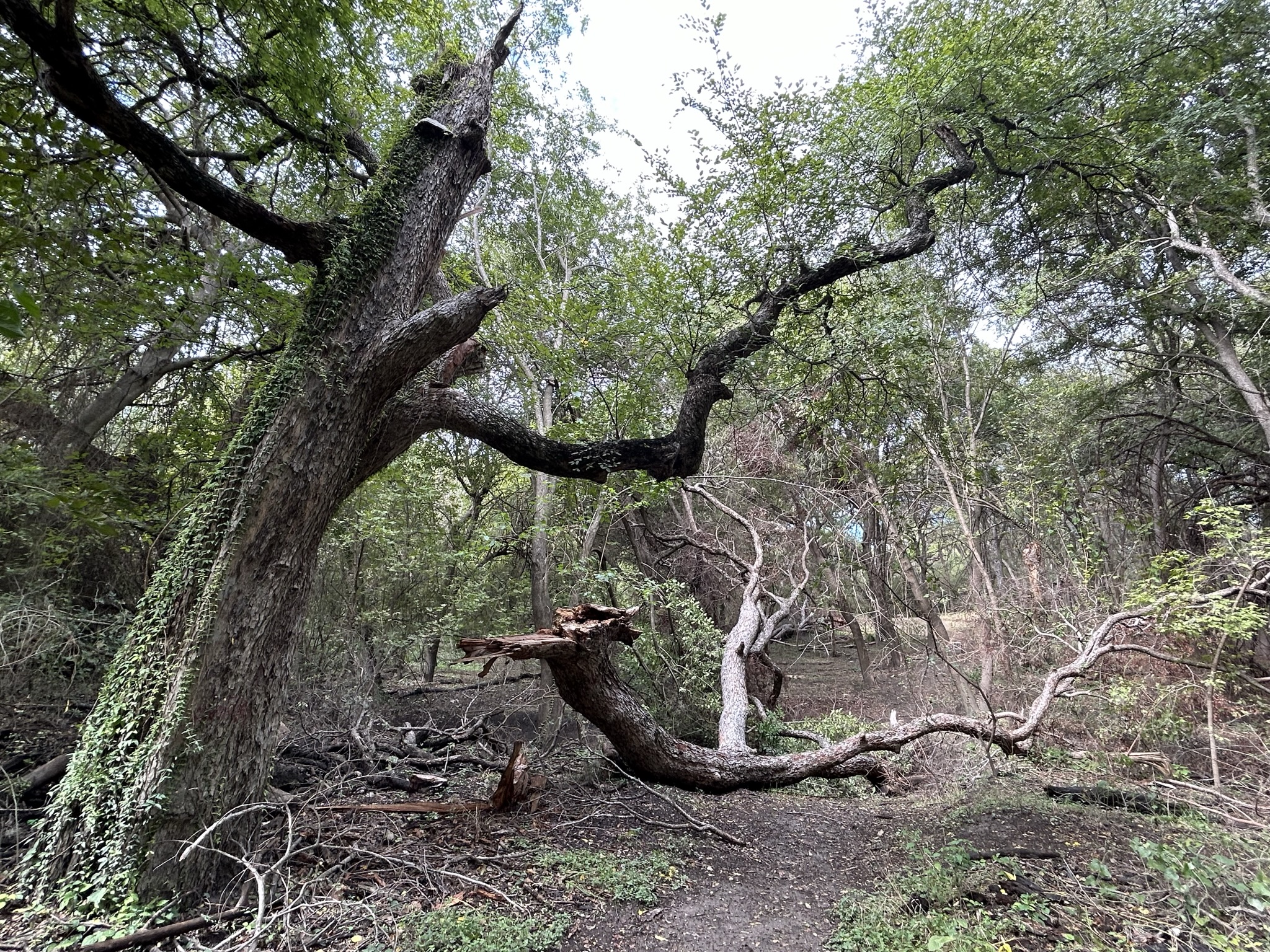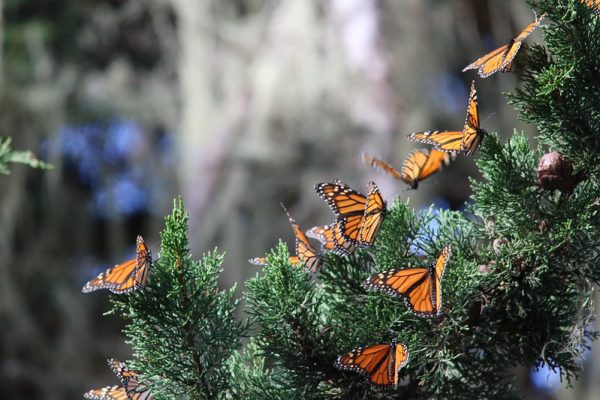Conflicting research, listings and delistings of the monarch butterfly as endangered, and historic heat converged to ring in a new year that left monarch butterfly followers’ heads spinning in efforts to make sense of the news.
The hottest year in history set the stage for testy debates, given an increase of the average worldwide temperature of 1.48 degrees Celsius/2.66 degrees Fahrenheit. That increase is a frightening 2/10 of a Celsius degree from the Intergovernmental Panel on Climate Change goal of limiting a warming world to a maximum of 1.5 Celsius, set in 2016.
The extremely hot 2023 seemed to foreshadow that future. Severe drought, wildfires, record heat, the mis-timed emergence of milkweed in the spring and a lack of nectar plants in the fall. It also delayed or even cancelled departures for fall migrating monarchs since the warm autumn encouraged late season lingering and even winter breeding. 
In an interesting twist, Canada added the monarch butterfly to its endangered species list under Canada’s Species at Risk Act (SARA) in December. The SARA, enacted in 2002, aims to protect at-risk species of Canadian wildlife.
The move by Canada came on the heels of the highly respected International Union for the Conservation of Nature’s (IUCN), reversal of listing the monarch as “endangered” in September. The Sweden-based IUCN downgraded the monarchs to “vulnerable,” a less severe designation.
Commenting on the seemingly conflicting narratives, Andrew Holland, a spokesperson for the Nature Conservancy of Canada, told Global News that monarchs are having “a tougher time” in Canada than elsewhere around the world.
The Canadian listing, unlike the IUCN designation, comes with regulatory authority. Canada will establish recovery strategies, actions for protecting monarchs and make it an offense to kill, harm or damage a species or its residence.
Meanwhile, an optimistic new study published in the journal Insects by monarch researcher David James, who focuses on the the western population at Washington State University, clashed with the narrative of some monarch butterfly researchers who focus mostly on the eastern populaion.

Drought and prolonged extreme heat took a toll on the ecosystem in 2023. –Photo by Monika Maeckle
In the study, published January 7 and titled “Monarch Butterflies in Western North America: A Holistic Review of Population Trends, Ecology, Stressors, Resilience and Adaptation,” James provides an overview of the impacts and consequences of climate change, pesticides, predators and other threats to the western monarch butterfly population. Ultimately, he concludes that monarch butterflies are amazingly resilient and have bounced back in recent years thanks, in part, to the the planting of non-native milkweeds in mostly urban settings.
Migration studies expert Andy Davis was not having it. Davis labeled the study “bombastic” in a post on his Thoughtful Monarch Facebook page, and took James to task for selective science.
“I referred to this paper as bombastic, because much of the conclusions David comes to are in contrast to those from other research, including some of my own, and many of my colleagues’,” Davis wrote in the post. He proceeded to challenge James for arguing that “things are different in the west than the east, and conclusions reached from eastern monarchs are not applicable (though he has no trouble drawing conclusions from work done in Australia).”
Weighing in from Emory University, monarch scientist Jaap de Roode, not a frequent presence on Davis’ Thoughtful Monarch page, also challenged James. “This paper is called a ‘Review,'” de Roode commented. “It is not. It is a speculative opinion piece that draws selectively on a subset of science that aligns with the author’s views.”
If you are confused about what to think about the future of monarch butterflies, you are not alone.
TOP PHOTO: Western monarchs overwintering on a conifer tree on the California coast. –Photo by Joanna Gilkeson/US Fish and Wildlife Service.
Related posts:
- Ice storms, extreme heat, drought decimate Texas tree canopy
- Diminished monarch migration moves slowly through Texas into Mexico
- IUCN revises listing of monarch from “endangered” to “vulnerable”
- Monarch migration underway as new studies suggest butterflies are “not in danger”
- Q & A : Migration studies expert Andy Davis says, for monarchs, it’s survival of the biggest
- Recent IUCN “endangered” listing creates confusion for monarch butterfly followers
- Eastern monarch population up 35% this year, but still much work to do
- Dejavu: is 2022’s dry spring setting the stage for another Texas drought like 2011?
- Three monarch butterflies tagged in honor of those who died recovered in Mexico
- They’re here! Drought conditions greet monarch butterflies as they arrive in Texas
Like what you’re reading? Don’t miss a single post from the Texas Butterfly Ranch. Sign up for email delivery, like us on Facebook, or follow us on Twitter, @monikam or Instagram.
/fusion_text]


God bless David James !
We as a population here in Canada and US as well , have to stop mowing ditches and allowing drifting spray from fields to wipe out the small clusters of milkweed that thrive in the ditches around these fields.
I like the part of this write up that says Canada will make it illegal to kill monarchs or their habitat!! Hurry up and get it into law!! G.W…Mb Ca
I do believe that the Monarch butterfly is in fact amazingly resilient. I know from experience living in Southern California, butterflies co-exist with us very well in urban settings if we make a little effort.
I do agree that the planting of non-native milkweed in urban settings has contributed to the success of the species. It is very difficult to plant native milkweed, the conditions have to be just right. Better to feed the caterpillars non-native milkweed than nothing at all.
I also agree that pesticides and predators are big threats. Sadly there are many people who still use pesticides. In my own experience, the tachinid flies are the biggest threat to the larva I have in my pesticide-free garden.
I do take Andy Davis to task for using the word bombastic, defined as “high-sounding with little meaning; overblown”. He says he uses that word “because much of the conclusions David comes to are in contrast to those from other research, including some of my own, and many of my colleagues’,” Disagreement happens in the scientific world – and it becomes an opportunity to objectively look at one’s own methodology to see what we might do differently.
I appreciate the people studying the western population of the monarch butterfly. Conditions are different in the west. I grew up on the east coast and go back to visit – but I live here in the west. Very, very different in terms of climate – particularly heat, humidity and rainfall. Also, in the west we have many urban centers – and yet vast areas with little to no human population, making it difficult to study butterflies in those areas.
There is still much to learn about the Monarch butterfly. Let’s work together and encourage one another in our scientific endeavors.
Most of these studies, findings, and claims by scientists are very confusing
and contradicting for most politicians that will eventually end up making
the wrong decisions in classifying our beloved monarchs.
Due to our past years work I noticed that in our communities with many new habitats
and a few people raising monarchs the population in our area has increased a lot
during the breeding season.
We truly think this is the best way to go in order to increase their migration numbers
and to assure us their coming back the following year.
Being around many Facebook groups has inspired me to write this page:
http://savethemonarchbutterfly.ca/are-monarchs-visiting-your-garden.pdf
Well done, Leo!!
I think your hypothesis is correct: adding habitats and raising monarchs increases the odds that the butterfly offspring will return back to it.
Makes total sense to me, and your numbers certainly support your hypothesis.
Thanks for your kind comments Kris. 🙂
The above article is going through some grammar corrections from someone who knows English literature better than a retired house painter with a bad Italian accent, and it will be shared everywhere. 🙂